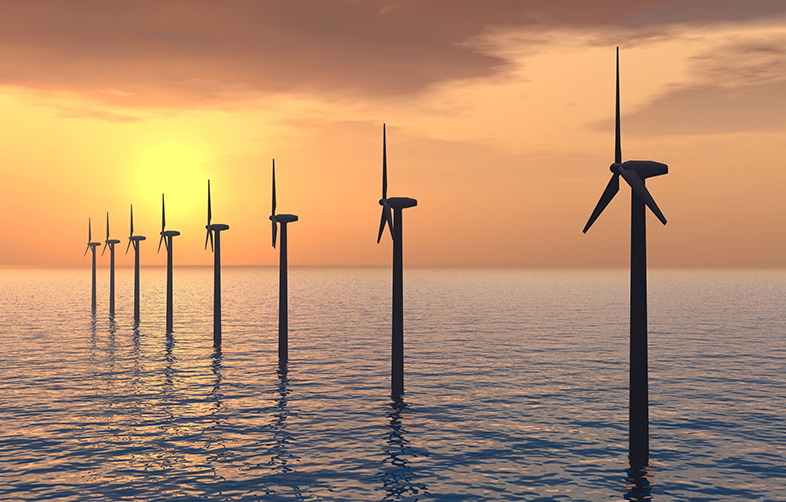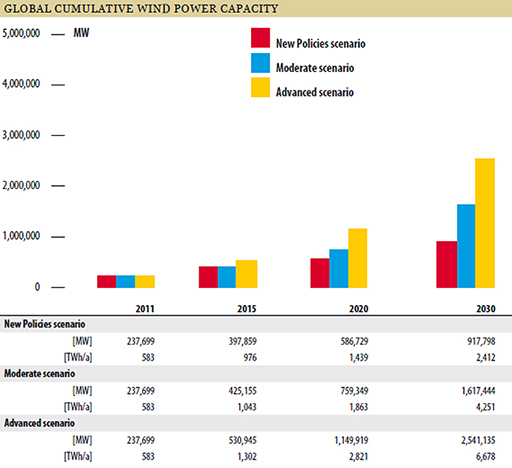9 Future prospects for wind energy
In 2016 the GWEC (Global Wind Energy Council) produced a series of global wind energy outlook scenarios (GWEC, 2016) to examine the future potential for wind energy up to 2020, 2030 and 2050. These were based on three scenario assumptions:
- a New Policies Scenario (NPS) based on the projections by the International Energy Agencys 2009 (IEA).
- An IEA 450 Scenario based on an optimistic interpretation of the implementation agreements in the Paris Climate Agreement.
- GWEC’s Moderate Scenario (MS) reflects a world which carries on more or less the way it has for the past decade.
- GWEC’s Advanced Scenario (AS) which uses more ambitious assumptions about the ability of wind energy to produce more than a third of global electricity demand by 2050.
Figure 23 shows the predicted increases in global cumulative wind power capacity based on these four scenarios up to 2050 (GWEC,2016).
Wind energy looks set to become a major generator of electricity throughout the world. Particularly in Europe, the offshore exploitation of wind energy is likely to become one of the most important means of reducing carbon dioxide emissions from the electricity sector. But achieving the levels of generation seen in the scenarios will require considerable investment in electricity grids, interconnection and in other infrastructure.
However, it appears that there is strong motivation from many governments and industries to facilitate this expansion.
Next you can attempt the Week 6 quiz.

